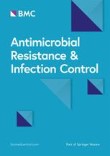Study: Crowded OR boosts likelihood of airborne bacterial contamination during sterile prep
Editor's Note
Reducing the number of OR personnel during preparation of sterile surgical goods significantly lowers airborne bacterial contamination, according to a randomized controlled trial published June 15 in Antimicrobial Resistance & Infection Control.
The study measured contamination levels during sterile setup for 69 open-heart surgeries, comparing rooms with two versus five individuals present. Researchers collected bacterial air contamination using 414 agar plates placed at the center of the OR during sterile goods preparation. The intervention group, limited to two personnel, recorded a median of 2 colony forming units (CFU) per plate (IQR: 2), while the control group with five personnel recorded a median of 5 CFU (IQR: 5), a statistically significant difference (p < 0.001). Across all sessions, 272 CFU were isolated—73 (27%) in the intervention group and 199 (73%) in the control group.
A total of 45 bacterial species were identified, with 38 species isolated in the control group and 21 in the intervention group. The most frequently identified organisms included:
- Cutibacterium acnes (82/272, 30%)
- Staphylococcus epidermidis (36/272, 13%)
- Micrococcus luteus (35/272, 13%)
- Staphylococcus hominis (20/272, 7%)
- Staphylococcus capitis (18/272, 7%)
Among 36 S. epidermidis isolates, 11 (31%) were drug-resistant, with three classified as multidrug-resistant. These included seven isolates from the control group and four from the intervention group. Two isolates of S. aureus, both susceptible to all tested antibiotics, were found in the control group only.
Two surgical site infections (SSIs) occurred during the two-month follow-up, one in each group. The control group SSI involved S. aureus and S. lugdunensis, neither of which had been isolated during that room’s sterile preparation. The intervention group SSI involved C. acnes, Corynebacterium kroppenstedtii, and S. epidermidis, two of which (C. acnes and S. epidermidis) had been isolated from the room’s air during prep.
Read More >>

 Free Daily News
Free Daily News